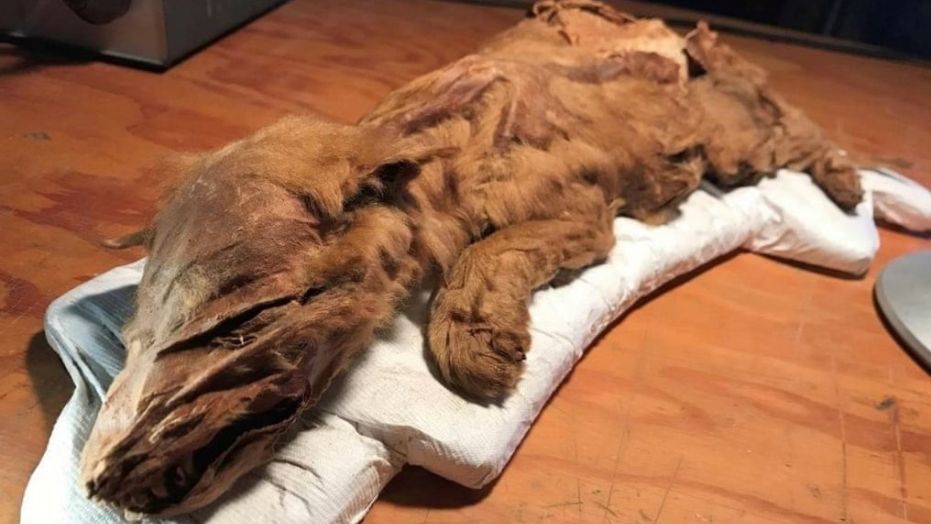
Scientists have unveiled the mummified remains of a caribou calf and wolf pup discovered on Tr'ondëk Hwëch'in traditional territory of the Klondike region of Canada's Yukon.
The animals—which hail from the Ice Age at more than 50,000 years old—are impressively preserved, with skin, hair and muscle tissue still in place, Yukon officials reported.
The caribou was found at a site with 80,000-year-old volcanic ash, the government of Yukon reported. Although older mammalian tissue had been discovered, it was still an incredibly unusual find. The wolf cub, paleontologist Grant Zazula said, was "to our knowledge...the only mummified Ice Age wolf ever found in the world."
Members of the Yukon Paleontology Program dug up the ancient creatures after miners reported the finds in June and July 2016. About half the caribou—the head, torso and front two limbs—and almost all of the wolf were recovered. The specimens were recently unveiled at the Dänojà Zho Cultural Center in the city of Dawson..
Yukon Premier Sandy Silver called the rare mummies "world-class finds" that "shed light on Yukon's fascinating Ice age history."
"For Tr'ondëk Hwëch'in, wolf and caribou are very important and interconnected. The caribou has fed and clothed our people for thousands of years," Tr'ondëk Hwëch'in chief Roberta Joseph said in the statement. "The wolf maintains balance within the natural world, keeping the caribou healthy." She called the creatures "an amazing find."
Currently on display in Dawson, the remains will be moved to Yukon Beringia Interpretive Centre in Whitehorse next month.
The permafrost of the Yukon region has yielded some impressive remains in the past. In 2013, researchers reported in Nature that they had sequenced the genome of an ancient horse believed to be about 700,000 thousand years old.
Many local fossil discoveries were tied to the Klondike Gold Rush, which saw tens of thousands of prospectors migrate to the Yukon in the late 1800s. The miners of today, Zazula, the paleontologist, said of the population, continued that legacy.
Scientists recently unearthed an extinct horse in Siberia's famous "mouth of hell" crater. Like the Yukon mummies, the well-preserved animal still retained its hair an estimated 40,000 years after its death. Prominent but controversial researcher Woo Suk Hwang has said his team would try to clone the ancient foal.
The Ministry of Tourism and Culture and Tr'ondëk Hwëch'in did not immediately respond to Newsweek's request for comment.
Uncommon Knowledge
Newsweek is committed to challenging conventional wisdom and finding connections in the search for common ground.
Newsweek is committed to challenging conventional wisdom and finding connections in the search for common ground.
About the writer
Katherine Hignett is a reporter based in London. She currently covers current affairs, health and science. Prior to joining Newsweek ... Read more
To read how Newsweek uses AI as a newsroom tool, Click here.






